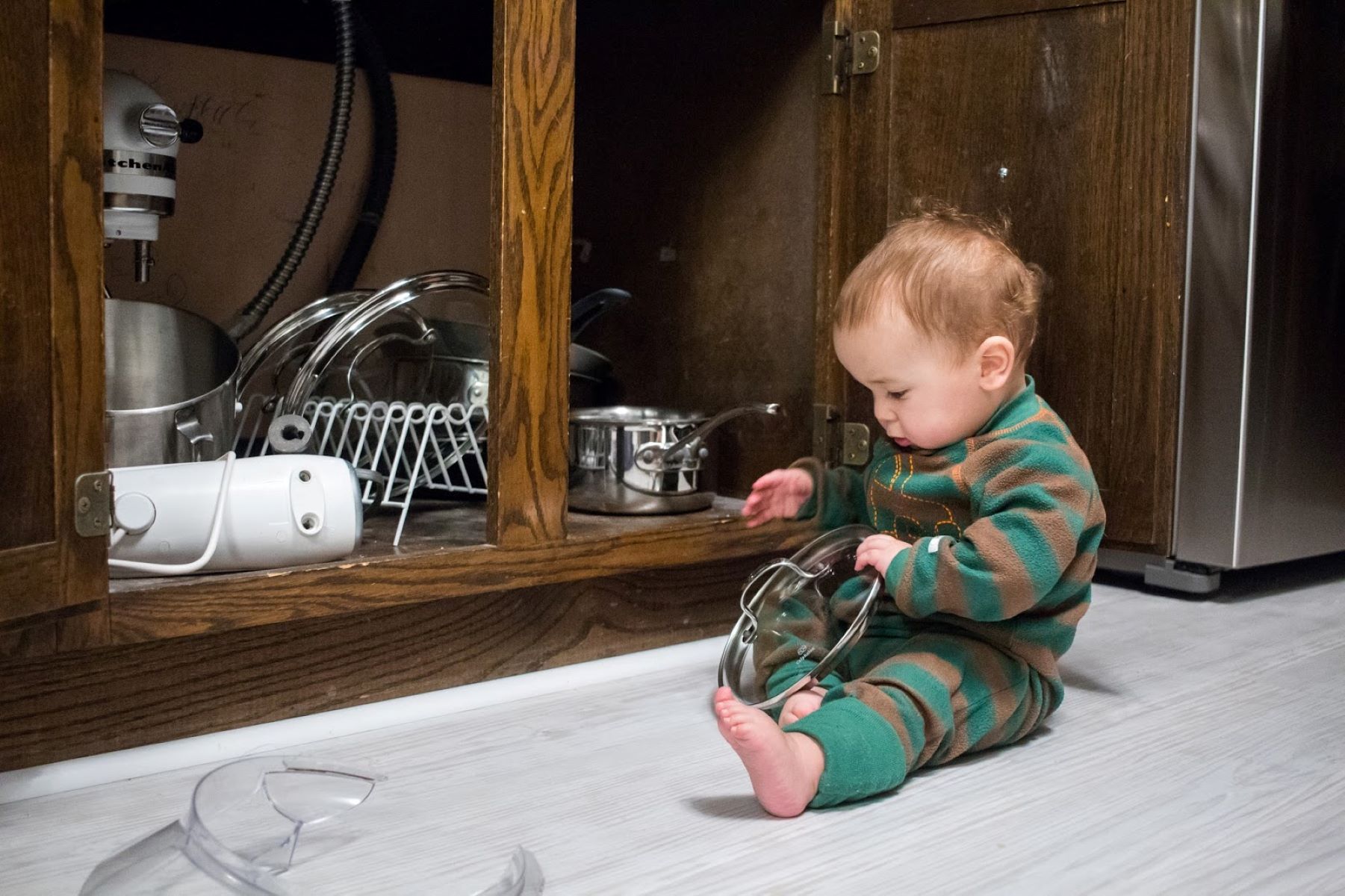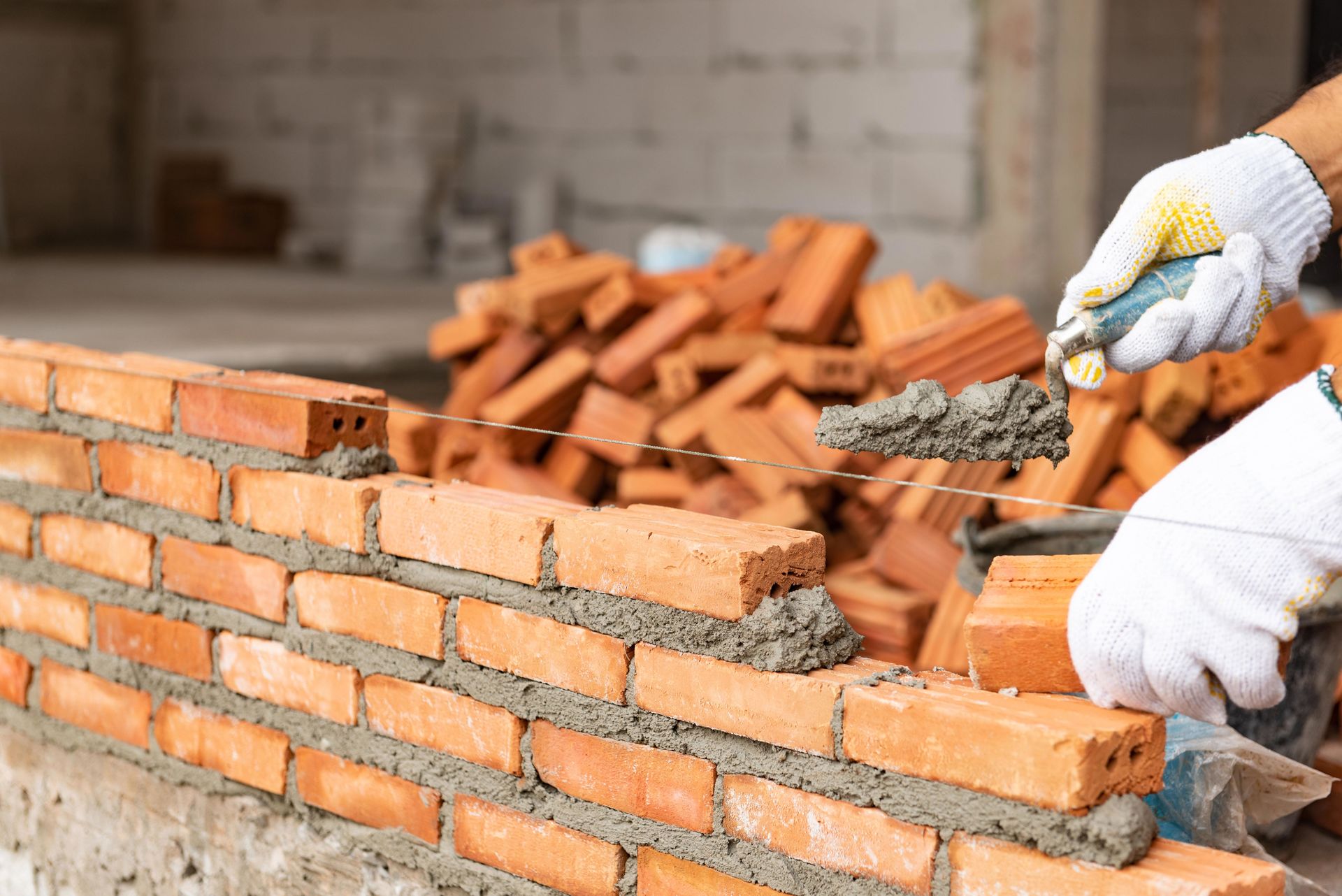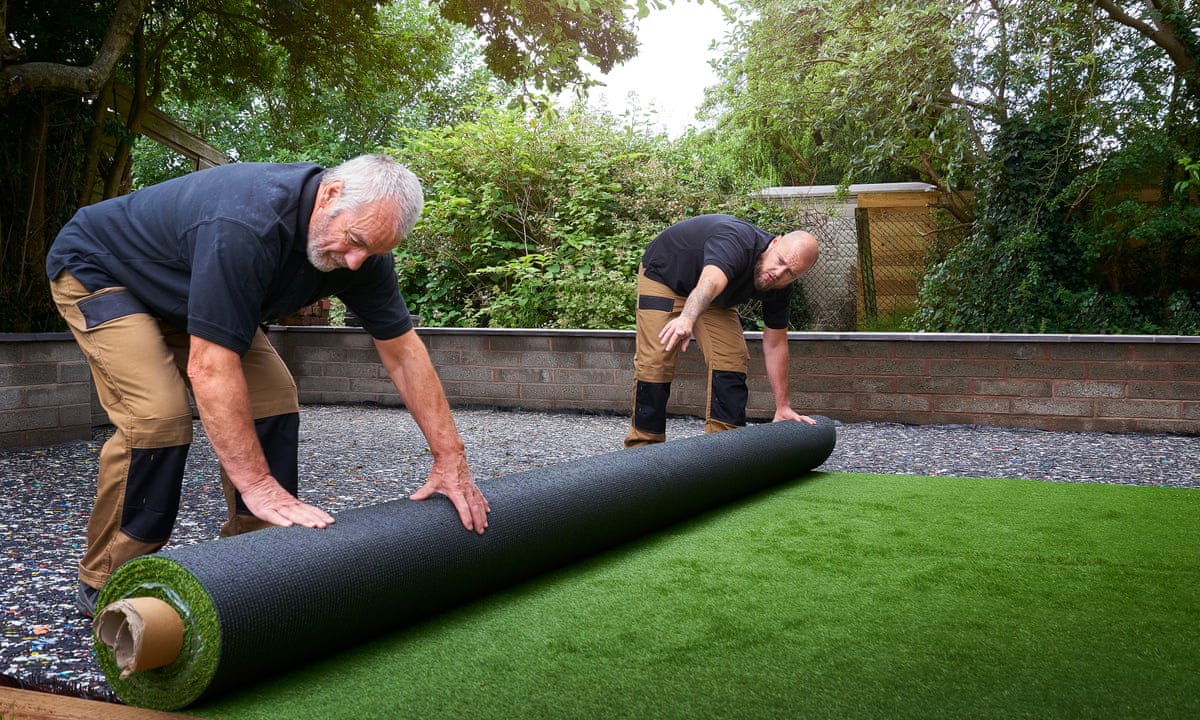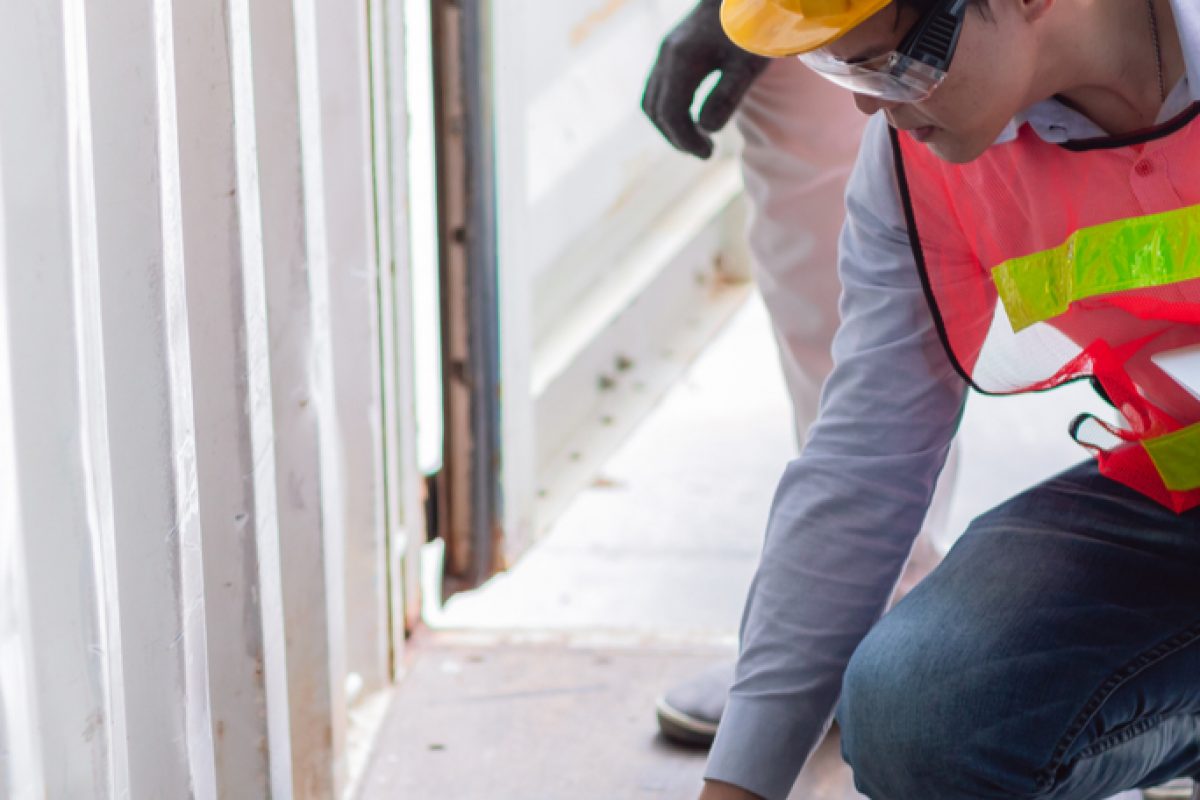Home>Maintenance & Safety>Safety Equipment & Products>What Does It Mean To Childproof?


Safety Equipment & Products
What Does It Mean To Childproof?
Modified: March 1, 2024
Childproofing your home is essential for your child's safety. Find the best safety equipment and products to create a secure environment. Learn what it means to childproof effectively!
(Many of the links in this article redirect to a specific reviewed product. Your purchase of these products through affiliate links helps to generate commission for Storables.com, at no extra cost. Learn more)
Introduction
Welcome to the world of childproofing, where safety meets creativity and a touch of parental ingenuity. As a parent or guardian, ensuring the safety of your little ones is a top priority. Childproofing is the process of making an environment safe for children by identifying and addressing potential hazards. From electrical outlets to sharp corners, there are numerous aspects of the home that can pose a risk to curious and adventurous young minds. Understanding the fundamentals of childproofing is essential for creating a secure and nurturing space for children to thrive.
In this article, we will delve into the meaning of childproofing, common measures that can be taken to safeguard your home, and the importance of prioritizing child safety. Additionally, we will explore practical childproofing tips that can be easily implemented to create a secure environment for your little ones. So, let’s embark on this journey to discover the art and science of childproofing, where safety and peace of mind go hand in hand.
Key Takeaways:
- Childproofing is about creating a safe environment for kids by securing outlets, furniture, and hazardous items. It allows children to explore and play with independence while giving caregivers peace of mind.
- Caregivers can childproof by using safety products, securing heavy furniture, and educating children about safety. It’s an ongoing commitment to creating a nurturing environment that supports children’s development and curiosity.
Read more: What Makes Childproof Containers Childproof?
Understanding Childproofing
Childproofing involves taking proactive steps to minimize potential hazards and create a safe environment for children. This process encompasses a comprehensive assessment of the living space to identify and address potential dangers that could pose a threat to a child’s well-being. By understanding the principles of childproofing, caregivers can effectively mitigate risks and ensure a secure setting for children to explore and play.
Childproofing extends beyond the traditional concept of safety gates and cabinet locks. It involves a holistic approach that considers various aspects of the home environment, including electrical outlets, furniture stability, household chemicals, and potential choking hazards. By recognizing the unique inquisitiveness and developmental stages of children, caregivers can anticipate potential dangers and take preemptive measures to eliminate or minimize them.
Furthermore, understanding childproofing entails staying informed about the latest safety recommendations and childproofing products. As new technologies and innovations emerge, caregivers can leverage advanced safety solutions to enhance the childproofing measures in their homes. By staying attuned to best practices and industry developments, caregivers can continuously adapt their childproofing strategies to align with evolving safety standards.
Ultimately, understanding childproofing involves a mindset of vigilance and a commitment to creating an environment where children can thrive without unnecessary risks. By embracing the principles of childproofing, caregivers demonstrate a steadfast dedication to safeguarding the well-being of the little ones in their care.
Common Childproofing Measures
Childproofing encompasses a range of measures designed to mitigate potential hazards and create a safe environment for children. These measures address various aspects of the home to minimize the risk of accidents and injuries. By implementing these common childproofing measures, caregivers can significantly enhance the safety of their living space for young children.
- Electrical Outlet Covers: Securing electrical outlets with covers or plugs is a fundamental childproofing measure. This prevents children from inserting objects into the outlets, reducing the risk of electrical shocks.
- Safety Gates: Installing safety gates at the top and bottom of stairs, as well as in doorways, helps restrict a child’s access to potentially hazardous areas.
- Cabinet and Drawer Locks: Using locks and latches on cabinets and drawers containing household cleaners, medications, and sharp objects prevents children from accessing dangerous items.
- Furniture Anchors: Securing furniture, such as bookshelves and dressers, to the wall prevents tipping, reducing the risk of injuries from furniture toppling over.
- Edge and Corner Guards: Applying soft guards to the edges and corners of tables, countertops, and furniture minimizes the risk of head injuries from accidental collisions.
- Window Guards and Cord Shorteners: Installing window guards and using cord shorteners for window blinds enhances window safety, reducing the risk of falls and entanglement.
- Smoke and Carbon Monoxide Detectors: Ensuring that smoke detectors and carbon monoxide detectors are installed and functional provides early warnings in the event of a fire or gas leak.
- Safe Storage of Hazardous Materials: Storing household chemicals, cleaning supplies, and medications in locked cabinets or high out-of-reach locations prevents accidental poisoning or ingestion.
These common childproofing measures serve as foundational steps in creating a secure environment for children to explore and play. By addressing these key areas of concern, caregivers can significantly reduce the likelihood of accidents and promote a safe and nurturing home environment for young children.
When childproofing your home, make sure to secure heavy furniture to the wall to prevent tipping, cover electrical outlets, and keep small objects out of reach to prevent choking hazards.
Importance of Childproofing
Childproofing plays a pivotal role in safeguarding the well-being of young children and promoting a secure living environment. Understanding the importance of childproofing is essential for caregivers to recognize the significant impact it has on preventing accidents and creating a safe space for children to thrive.
Accident Prevention: Childproofing measures are instrumental in preventing common household accidents that can cause injuries to children. By implementing safety gates, securing furniture, and covering electrical outlets, caregivers can mitigate the risk of falls, tip-overs, and electrical hazards, reducing the likelihood of accidents.
Promoting Exploration and Independence: A well-childproofed environment allows children to explore and engage with their surroundings with a greater sense of independence. By minimizing potential hazards, caregivers can create a space where children can play and learn with reduced risks, fostering their cognitive and physical development.
Peace of Mind for Caregivers: Childproofing provides caregivers with peace of mind, knowing that proactive measures have been taken to create a safe and secure environment for children. This alleviates concerns about potential hazards and allows caregivers to focus on nurturing and interacting with the children without constant worry about their safety.
Preventing Accidental Poisoning and Ingestion: Childproofing measures, such as securing cabinets containing household chemicals and medications, significantly reduce the risk of accidental poisoning and ingestion. This proactive approach minimizes the likelihood of exposure to toxic substances, mitigating potential health risks for children.
Creating a Learning Environment: A well-childproofed space encourages learning and discovery while minimizing risks. Children can engage in age-appropriate activities and play without unnecessary dangers, fostering a positive and enriching learning environment within the home.
Supporting Child Development: Childproofing supports the natural curiosity and development of children by providing a safe environment for exploration and play. By addressing potential hazards, caregivers can nurture children’s development while minimizing the likelihood of preventable accidents.
Overall, the importance of childproofing cannot be overstated. It serves as a proactive and essential practice in creating a secure, nurturing, and developmentally supportive environment for children to thrive and grow.
Childproofing Tips
When it comes to childproofing, a proactive and thorough approach is key to creating a safe environment for children. By implementing the following childproofing tips, caregivers can significantly enhance the safety of their living space and minimize potential hazards that could pose risks to young children.
- Thorough Home Assessment: Conduct a comprehensive assessment of the home, identifying potential hazards such as sharp corners, accessible electrical outlets, unsecured furniture, and choking hazards. This initial step lays the foundation for effective childproofing.
- Invest in Safety Products: Acquire high-quality safety products such as outlet covers, safety gates, cabinet locks, furniture anchors, and edge guards to address specific safety concerns throughout the home.
- Secure Heavy Furniture: Anchor heavy furniture, such as bookshelves and dressers, to the wall to prevent tip-overs, reducing the risk of injuries from furniture toppling over.
- Keep Small Objects Out of Reach: Store small objects, including coins, batteries, and small toys, out of reach to prevent choking hazards for young children.
- Monitor Water Safety: Supervise children around water sources, such as bathtubs and swimming pools, and consider installing locks or safety covers for added protection.
- Safe Storage of Chemicals and Medications: Store household chemicals, cleaning supplies, and medications in locked cabinets or high out-of-reach locations to prevent accidental poisoning or ingestion.
- Create Safe Play Areas: Designate specific play areas within the home that are free from potential hazards, allowing children to engage in activities without unnecessary risks.
- Regular Maintenance: Routinely inspect and maintain childproofing measures, ensuring that safety products are secure and functional. Replace worn-out or damaged safety items promptly.
- Education and Supervision: Educate children about safety rules and potential hazards, and provide attentive supervision to reinforce safe behavior and prevent accidents.
- Stay Informed: Stay updated on the latest childproofing recommendations and safety standards, incorporating new strategies and products as needed to enhance home safety.
By incorporating these childproofing tips into their caregiving routine, parents and guardians can create a secure and nurturing environment that prioritizes the safety and well-being of young children.
Conclusion
Childproofing is a fundamental aspect of creating a safe and nurturing environment for children to thrive. By understanding the principles of childproofing, implementing common safety measures, and recognizing its importance, caregivers can significantly reduce the risk of accidents and promote a secure living space for young children.
Childproofing is not merely a checklist of safety measures; it is a proactive and ongoing commitment to safeguarding the well-being of children. It involves a combination of thoughtful planning, investment in safety products, and a keen awareness of potential hazards within the home environment.
Moreover, childproofing is a dynamic process that evolves alongside the developmental stages of children and the changing dynamics of the living space. As children grow and explore their surroundings, caregivers must adapt and reinforce childproofing measures to align with new challenges and safety considerations.
Ultimately, childproofing is a reflection of the unwavering dedication of caregivers to create an environment where children can learn, play, and grow without unnecessary risks. It provides peace of mind, promotes exploration and independence, and supports the natural development of children within the safety of their homes.
By embracing the principles of childproofing and incorporating proactive safety measures, caregivers demonstrate a steadfast commitment to nurturing the well-being of the little ones in their care. Childproofing is not just about creating a secure space; it is about fostering an environment where children can thrive with confidence, curiosity, and the freedom to explore their world safely.
In conclusion, childproofing is a cornerstone of responsible caregiving, embodying the values of safety, vigilance, and the unwavering commitment to prioritize the well-being of children within the home environment.
Frequently Asked Questions about What Does It Mean To Childproof?
Was this page helpful?
At Storables.com, we guarantee accurate and reliable information. Our content, validated by Expert Board Contributors, is crafted following stringent Editorial Policies. We're committed to providing you with well-researched, expert-backed insights for all your informational needs.















0 thoughts on “What Does It Mean To Childproof?”